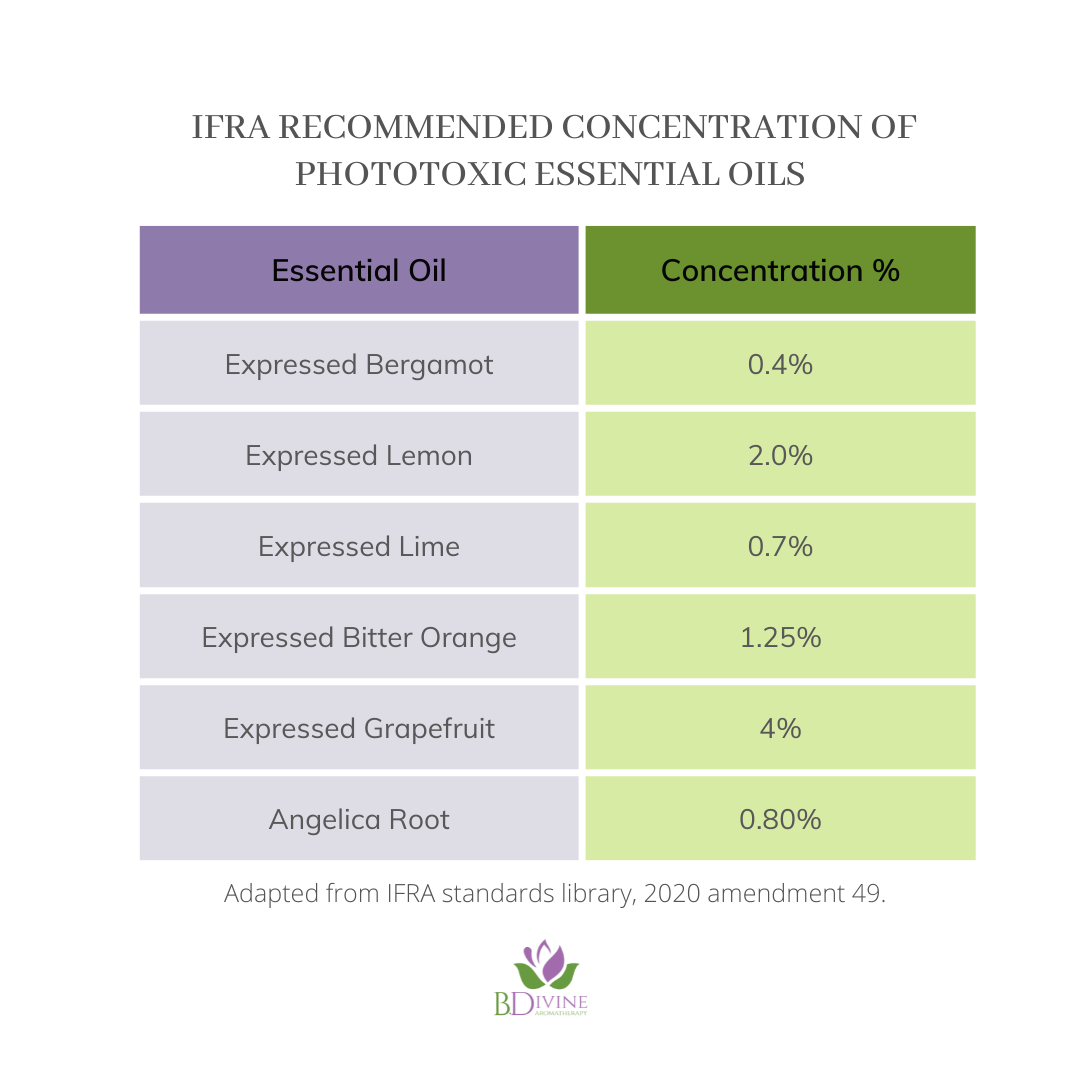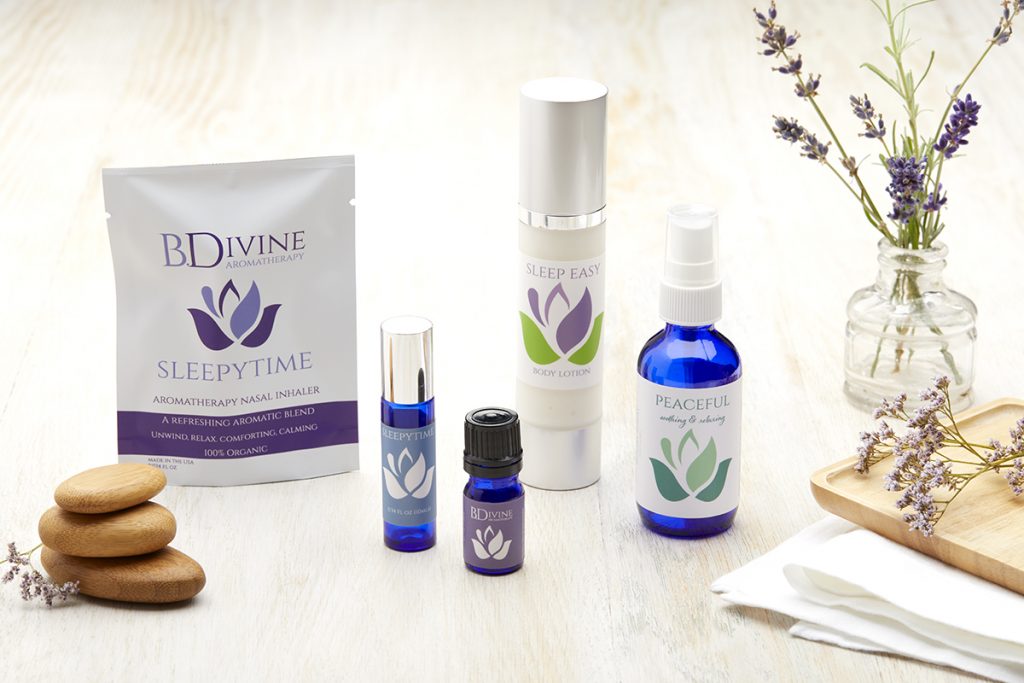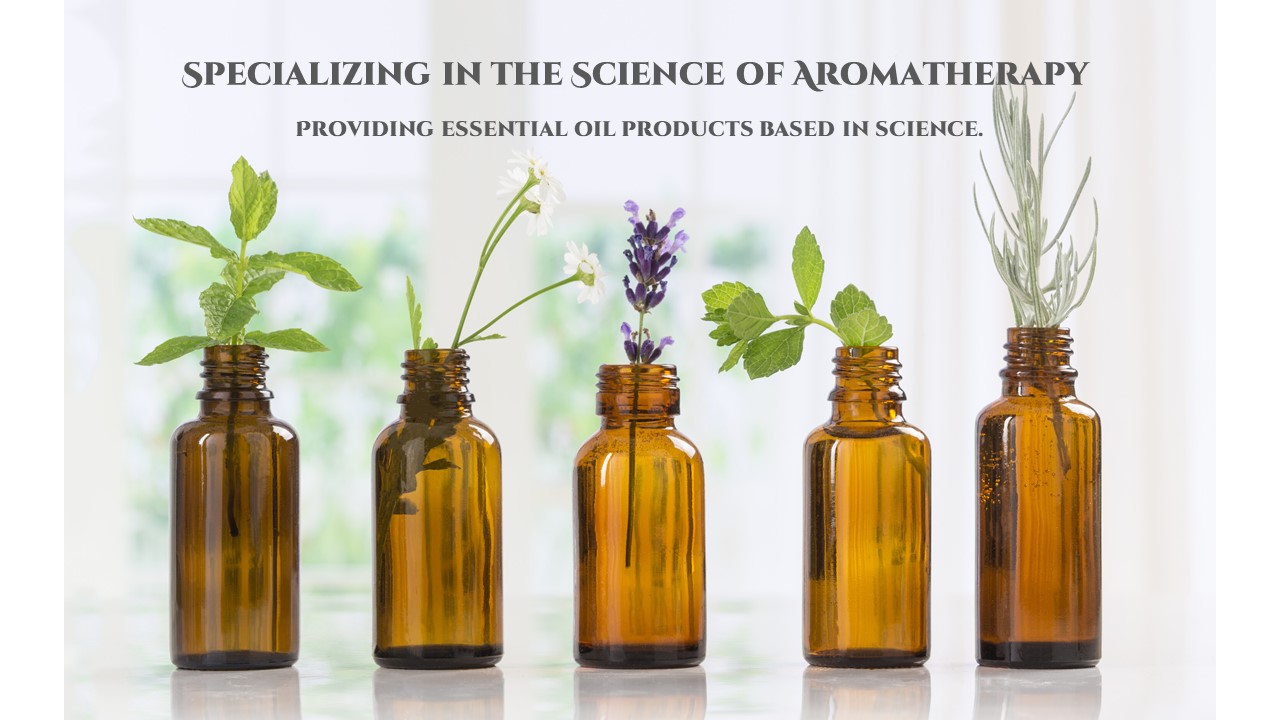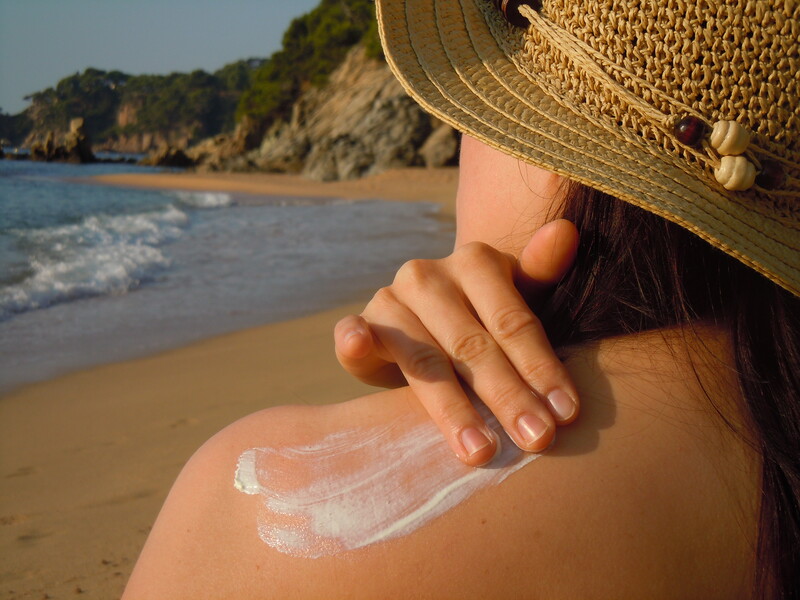Staying Safe While Enjoying Your Oils
“Applied knowledge is power.”
– E. Thomas
What is photosensitivity?
Photosensitivity, also known as phototoxicity, simply means that your skin becomes more sensitive to the sun (UV exposure). Using photosensitive essential oils on your skin and heading out in the sun could cause unnecessary sun damage to your skin (sunburn) and has the potential to increase the chances of skin cancer.
It is also important to point out that photosensativity can occur if you ingest these types of essential oils. As a certified clinical aromatherapist I do not advocate ingenstion of eo’s. (There are much safer avenues such as herbs.) However, I have had many conversations with people who do ingest. Please know that if you ingest photosensitive oils and go out into the sun, your entire body (if exposed) is at risk for sun damage, not just the local area you applied the oils.
Why are some essential oils phototoxic?
Essential oils contain a class of chemical compounds known as furanocourmarins (FCs). When these compounds are placed on your skin and exposed to UV/sunlight, a process of bonding occurs, leading to a skin condition known as phytophotodermatitis (or photoxic reaction).
An example of a furanocourmarin is the Bergapten found in Bergamot essential oil.

Examples of Phototoxicity
- Blisters, thickened skin
- Swelling
- Redness of the skin
- Burning, sensitive skin
Essential oils that are phototoxic
Below is a list of common essential oils known to be phototoxic. It is not a comprehensive list. If you are interested in an oil that is not on this list, you can go the the IFRA standards library at this link: IFRA Standards Library (ifrafragrance.org)

Known Phototoxic Essential Oils
- Expressed Lime Oil
- Expressed Lemon Oil
- Bergamot Oil
- Grapefruit Oil
- Expressed Bitter Orange Oil
- Mandarin Leaf Oil
Known Non- Phototoxic Essential Oils
- Bergamot Oil (FCF- bergaptene removed)
- Distilled Lemon Oil
- Sweet Orange Oil
- Tangerine Oil
- Mandarin Oil

So what if I want to use these essential oils and go out into the sun?
1) Using these phototoxic oils at or below the recommended concentration will help to minimize any photoreactions you may have. My recommendation is to still use some caution.
2) Cover-Up for 12-24hrs. This is a way to ensure there is no reactivity with the sun. (My recommended way).
An interesting fact– Photosensitivity is not always immediate. It can occur 36-72hrs. post UV exposure.
For skin application: Below is a chart of recommended dilution rate of phototoxic essential oils if you want to limit photosensitivity.

Want to download this chart for future reference? Click on the link to get your free download: https://mailchi.mp/8246f640ee52/dilution-chart-for-phototoxic-oils
***The above recommendation is for leave-on products and does not apply to wash-off products such as body soap and shampoos.

Are you at higher risk for photosensitivity?
Many people are unaware that medications can also cause photosensitivity. It is important to check your prescription.
Using photosensitizing oils with prescriptions that can make you sensitive to the sun can add an even bigger hazard.
If you’re unsure, check with your doctor or pharmacist.
Safety First
Using the science of essential oils, each product formulated by B. Divine Aromatherapy adheres to the guidelines and recommendations of IFRA for phototoxic essential oils. Keeping you safe while you enjoy our essential oil blends.

References:
IFRA Standards Library (ifrafragrance.org)
[Robert Tisserand and Rodney Young, Essential Oil Safety (Second Edition. United Kingdom: Churchill Livingstone Elsevier, 2014)
Petersen, Dorene. “Essential Oil Safety.” Aroma 101: An Introduction to Aromatherapy, edited by Dorene Petersen, 18th ed., Oregon, American College of Healthcare Sciences, 2017

Meet Beth, the founder of B. Divine Aromatherapy. A scientist and certified clinical aromatherapist. Using her love of science to offer functional aromatherapy blends.

I hope this will add knowledge and insight into your journey with essential oils. I always enjoy fun information on how to use my essential oils safely, hopefully, you will too!

